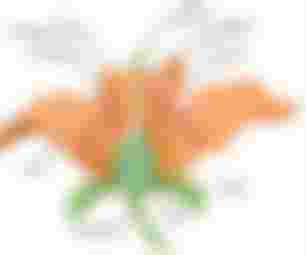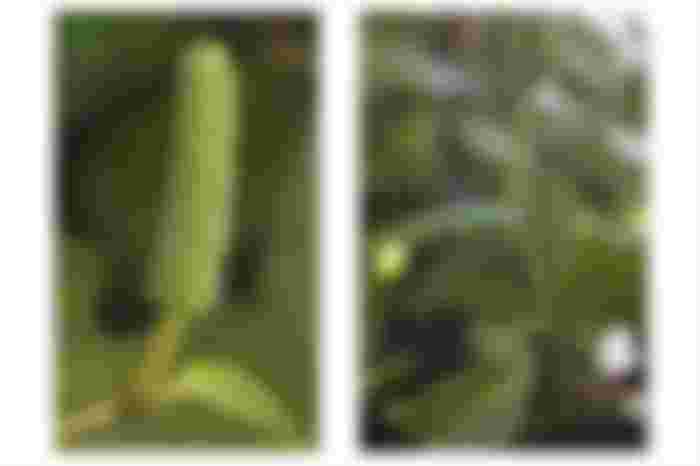Most flowers have the same basic parts, even though they come in all sorts of shapes, sizes and colours. Flowers are there to make sure that pollination and fertilisation take place, so that seeds can be produced. If you want to understand about these stages in the life cycle of flowering plants, it helps to know about flower structure and the names for different parts.
The kōwhai (Sophora species) is a well known New Zealand flower and has flower parts that are easy to recognise. Masses of bright yellow kōwhai flowers are a common springtime sight in gardens and in the wild. The flowers are pollinated by birds, especially tūī and bellbirds, so are brightly coloured to attract them. The flowers are shaped like a tube, so birds pick up or leave pollen when they stick their beaks in to reach the nectar at the bottom.

Cutaway kōwhai
Kowhai flowers are bird-pollinated flowers. Other flowers have different shapes, colours and arrangements of parts, depending on what pollinates them. Some petals of one flower have been removed to reveal inside.



The main parts of kōwhai flowers
Sepals – these form a case that protects the flower before it opens when it is still a bud.
Petals – in kōwhai, these are large and brightly coloured to attract birds.
Nectary – this makes and holds nectar, a sugary liquid food for birds (and insects in other plant species).
Stamen – this is the male part of the flower, with two main parts:
Anther – where pollen is made and stored.
Filament – attaches the anther to the flower.
Carpel – this is the female part of the flower, with three main parts:
Stigma – receives pollen from another flower.
Style – connects stigma to the ovary
Ovary – contains ovules, which hold female sex cells called gametes

Kawakawa tries to avoid self-pollination by having female (left) and male (right) flowers on different plants. The pale patches are stigmas and the black dots are anthers.
Of course, not all flowers are the same as kōwhai. Like most bird-pollinated flowers, it has big colourful petals, but many insect-pollinated flowers only have small white or greenish petals – they tempt insects to visit using smell rather than colour. Many wind-pollinated flowers, such as grasses and a number of our flowering trees, don’t have petals at all. Nectar is no use to wind-pollinated flowers either, as they don’t need to attract animals.
The kōwhai has male and female parts in the same flower. Some other plants have separate male and female flowers, either on the same plant or on different plants.
Kawakawa (Macropiper excelsum, pepper tree) is just one example of a New Zealand native plant with male and female flowers on separate plants. It is wind pollinated, so doesn’t have petals as it doesn’t need to attract animals.
It takes a bit of practice to be able to recognise and name parts of flowers, because each plant species has different flowers. Try naming the parts in this cutaway picture of a tulip flower.





Great post dear friend